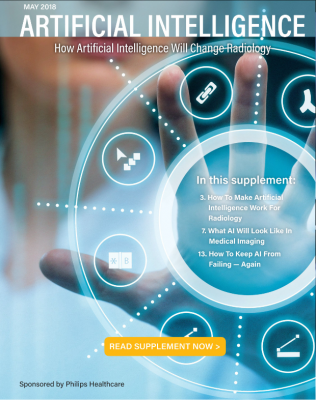
Many say it is very difficult or impossible to go through the large volumes of data to pick out what is clinically relevant or actionable. It is easy for things to fall through the cracks or for things to be lost to patient follow-up. This issue is further compounded when you add factors like increasing patient volumes, lower reimbursements, bundled payments and the conversion from fee-for-service to a fee-for-value reimbursement system.
This is where artificial intelligence comes in, and will play a key role in the next two years. AI will not be diagnosing patients and replacing doctors — it will be augmenting their ability to find the key, relevant data they need to care for a patient and present it in a concise, easily digestible format.
Regardless of how artificial intelligence is applied, the underlying intelligence is undeniably artificial. That fundamental truth has been enough to make some fearful that artificially intelligent machines might one day replace humans. Vendors in radiology have sought to quiet those fears by positioning their AI creations as intelligent assistants that help people do their jobs faster and better. The patient ultimately will benefit from this technology, however, through better and more convenient health care.
This supplement, written by industry consultant Greg Freiherr, will take a close look at three key components of AI:
- How To Make Artificial Intelligence Work For Radiology
- What AI Will Look Like In Medical Imaging
- How To Keep AI From Failing — Again
And as Greg states, “It’s hard to find a more compelling reason for the use of AI now or in the future than helping physicians make better decisions faster.”


 December 24, 2025
December 24, 2025 









